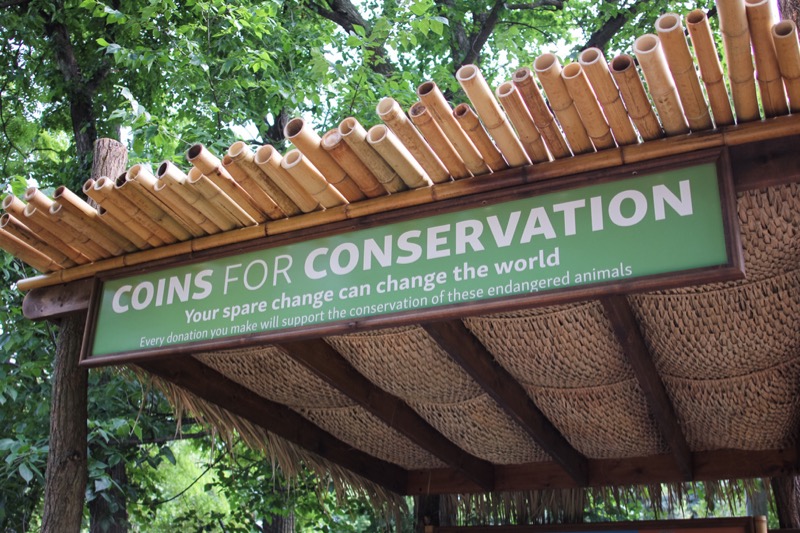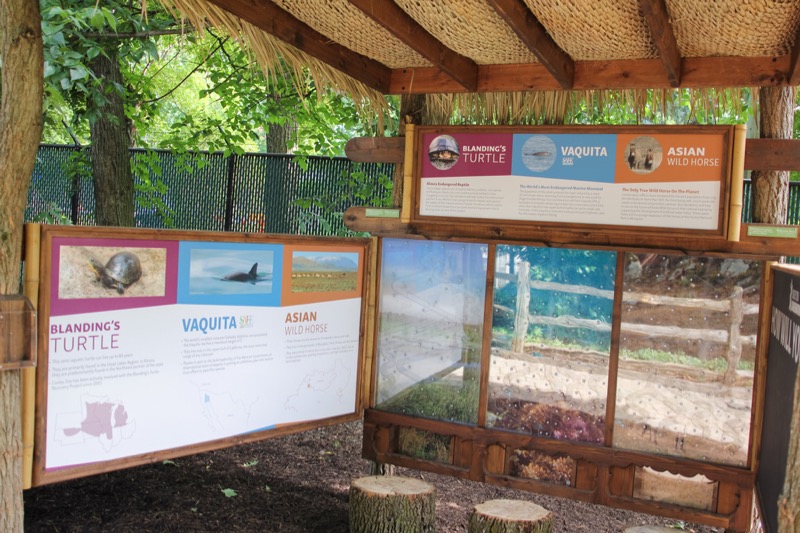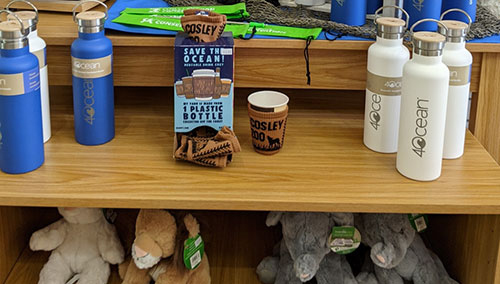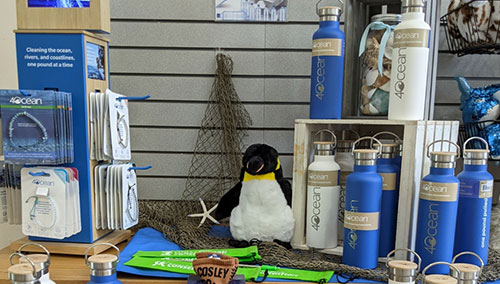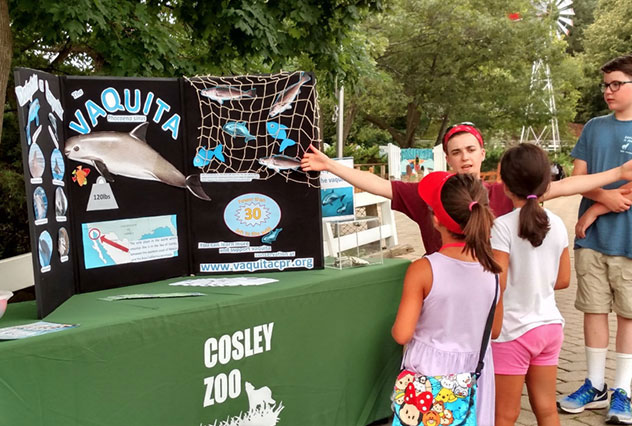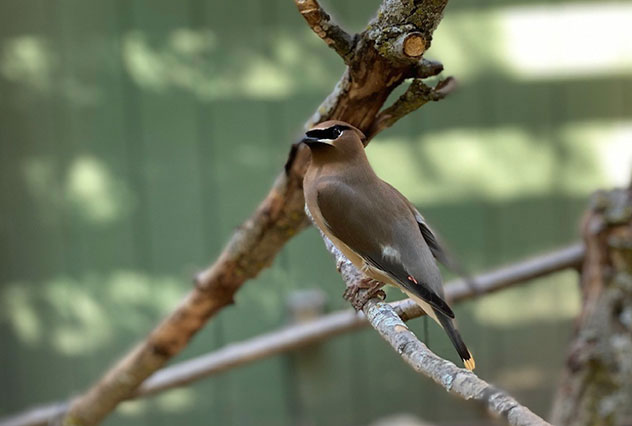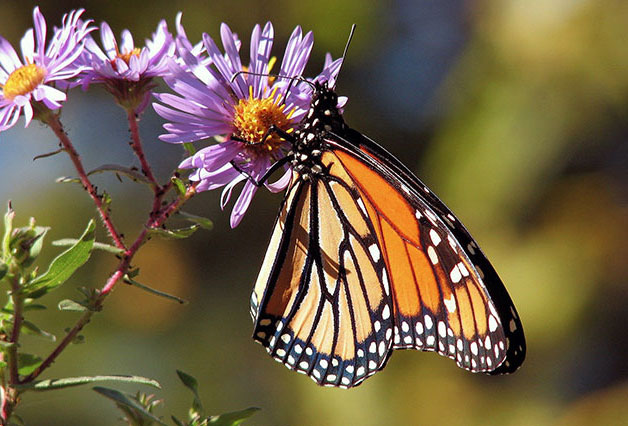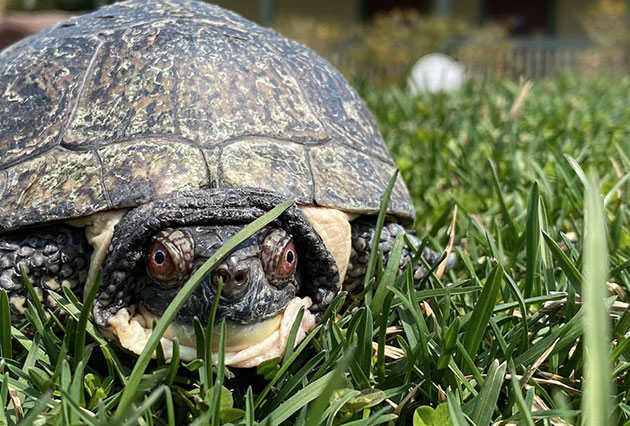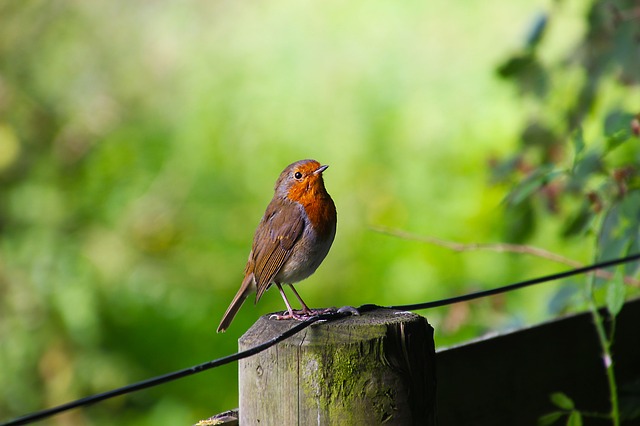Conservation
Conservation is a key component of Cosley Zoo’s mission.
We demonstrate our commitment to conservation on a daily basis by participating in environmentally friendly practices such as recycling, using a rain barrel to collect water for plants, re-purposing materials rather than buying new ones, minimizing plastic waste by providing plastic bags and straws to guests on request only, and installing energy-efficient lighting. We also participate in several large-scale conservation initiatives.
Secure donation portal at kindful.com opens in new window and is best viewed using Chrome, Firefox, Edge and Safari web browsers.
AT THE ZOO
COINS FOR CONSERVATION
Your support can change the world.
Stop by and visit the Coins for Conservation Display at Cosley Zoo and donate your spare change to help support conservation efforts for these endangered species, or make a donation here.
BIRD CONSERVATION
Benefits of feeders
Bird feeders are beneficial in so many ways! They can aid in survival during migration and harsh weather, they bring more local or migrating birds to your garden, and they assist in increasing pollination, which in turn promotes a healthy natural environment.
With so many bird food and feeder options, how do you decide what’s right for your yard? It depends on what types of birds you’d most like to attract! Different species of birds have different food requirements and preferences and can be drawn to different styles of feeders. To attract a large variety of bird species, use several different feeder types and food options. Keep in mind that regular cleaning is a must, regardless of feeder type, and that birds are often drawn to areas that have both clean water and shelter as well as food.
Types of feeders
Tube feeders are versatile – they come in many different sizes and can hold a variety of different types of foods. These feeders are designed to keep food relatively clean and dry. Types of birds drawn to these feeders largely depend on the size of the feeder and the type of food used.
Nyjer feeders are specialized feeders for nyjer (also called thistle seed). They generally come in two designs – a tube feeder with very small holes, or a fine-mesh bag (also called a “thistle sock”). These feeders are specifically made to attract finches. Because they are so specialized, they may not get as much use as other types of feeders. The fine-mesh style will not keep seed clean and dry and will need to be changed out more often.
Hopper feeders look like a platform with walls and a roof that form a “hopper” for seed to be stored in. Similar to tube feeders, the type of birds attracted to these feeders largely depends on the type of food provided, though the platform element allows larger birds such as cardinals, jays, and grackles to land. They do come in a variety of sizes, and you can choose a smaller hopper if you prefer smaller birds at your feeder. These feeders protect against the weather to some extent.
Platform feeders are any raised, flat surface on which food can be spread. They attract the widest variety of birds due to openness and ease of landing, but don’t have a cover to protect seed from getting wet and can easily and quickly get soiled with bird droppings.
Suet feeders usually look like logs with large holes or square-shaped cages. They are designed to hold suet, a “cake” made of fat and often mixed with seeds or fruits. Suet primarily attracts insect-eating birds such as woodpeckers, nuthatches, and chickadees. These feeders are more commonly used in the winter, as warm temperatures can cause suet to go rancid.
Nectar feeders are also called hummingbird feeders, as these feeders are exclusively used to attract hummingbirds. These feeders hold a liquid sugar water, or nectar. Because nectar spoils quickly, these feeders need to be cleaned more regularly than other feeders.
Types of food
Specialized food such as nyjer, suet, and nectar need special feeders, but most other types of food can be offered in your preference of feeder.
Black-oil sunflower seeds are one of the most common types of food offered in North American feeders. This is a preferred food item for many types of birds, including cardinals, finches, and sparrows. Hulled sunflower seeds are the same type of seed, but with the shell removed, which reduces waste. Any bird that eats sunflower seeds in the shell will also eat them hulled, and some birds prefer the seeds without the shell, as they are easier to eat.
Safflower seeds are similar to sunflower seeds, but slightly smaller and white in color. Birds that eat sunflower seeds often also enjoy safflower seeds. Birds with larger bills, such as cardinals, seem to eat these seeds better than birds with smaller bills.
Cracked corn and oats are fairly inexpensive compared to seeds. They can be mixed in with seeds to provide some added variety. They are generally preferred by ground-feeding birds such as mourning doves and sparrows.
Millet is a small, round grain and is a favorite of small, ground foraging birds such as juncos and sparrows.
Peanuts are a favorite of a number of birds, and can be provided with or without the shell, though should only be purchased raw – no salt or other seasonings. Larger birds such as jays may take a number of whole peanuts at a time, while smaller birds such as chickadees, nuthatches, and titmice enjoy smaller, shelled peanuts.
Mealworms are the larval form of the mealworm beetle and are favored by many species of insect-eating bird. They can come live or dried, and are a high-protein treat for birds like chickadees, wrens, and bluebirds.
Fresh or dried fruits are also an option! Fresh oranges can attract orioles, while grapes and other fruits can draw robins, waxwings, and catbirds. Seeds from fruits such as pumpkins may also appeal to some species. Uneaten fruit goes moldy fast, and should not be left out for long periods of time.
Bird conservation
Two of the biggest threats North American songbirds currently face are predation by domestic cats and collisions with window glass. You can help protect songbirds by keeping your cats indoors (or on leashes when outside), and by applying anti-collision stickers or decals to your windows.
Since the 1970s, the North American bird population has dropped by nearly 3 billion birds, with “common” birds such as sparrows, warblers, and finches representing nearly 90% of the losses.
Domestic cats
Predation by outdoor domestic cats accounts for more than 2.4 billion bird deaths annually in the United States alone, making it the largest direct source of human-caused mortality to birds. Not only do cats instinctively hunt birds, even when well-fed, but they also spread diseases and disrupt ecosystems.
Keeping cats indoors benefits both birds and the cats themselves, as indoor cats live longer, healthier lives. There are options for cat owners who want to enjoy supervised outdoor time with their cats, including “catios” and other outdoor enclosures, harnesses, backpacks, and strollers. The American Bird Conservancy has some great resources to help keep both pet cats and wild birds safe: https://abcbirds.org/catio-solutions-cats/.
Collisions
In the United States, more than 1 billion birds are killed or injured every year from window strikes. Birds cannot recognize glass; they perceive the reflections in windows as a part of the habitat, and will try to fly through, not realizing there is a barrier. Additionally, birds that migrate after dark are often drawn to the lights from inside buildings.
There are simple ways to make your window glass safer for birds. Products such as tape or decals can be added to existing windows; UV-reflecting or etched glass can be used in windows that need to be replaced. The American Bird Conservancy offers recommendations for products that can reduce collisions here: https://abcbirds.org/solutions/prevent-home-collisions/. At night, reducing artificial light, closing curtains or blinds, and switching to downward-facing light fixtures can also help.
If you witness a bird strike a window, or find a bird dazed from a window strike, bringing it to a wildlife rehabilitation center is a priority. Many birds that appear unharmed after colliding with a window later succumb to their injuries. There are a number of rehabbers in the Chicagoland area that can treat victims of window strikes, including the Chicago Bird Collision Monitors and the DuPage Wildlife Conservation Center.
Other ways to help
There are additional things you can do to help wild birds, right from your house! If you are a coffee drinker, one option is to purchase coffee with the Smithsonian’s Bird Friendly certification. This certification is only given to coffee growers that meet strict conservation standards. According to the Association of Zoos and Aquariums, for coffee growers “to be certified by the Bird Friendly program, producers must maintain a minimum of 40 percent shade coverage over their crop, have at least 11 tree species on their land with 60 percent of the species being native to the region, and maintain a minimum tree canopy height of 12 meters. All Bird Friendly farms must also be certified organic, ensuring no hazardous pesticides or chemicals are ever used in production.” These standards ensure that Bird Friendly habitat is protected and high-quality for birds and other wildlife. You can buy Bird Friendly coffee in the Wild Side Gift Shop at Cosley Zoo, or online via the Smithsonian’s National Zoo & Conservation Biology Institution’s website.
If you enjoy gardening, or even if you just have a yard, you can make it more accommodating for birds by reducing lawn and planting more native species. Gardens made of native trees, shrubs, and wildflowers offer food and shelter for wildlife, including birds. Plus, native plants grow more easily and require less maintenance, meaning you can also reduce the amount of harmful insecticides, herbicides, and fertilizers you use.
Finally, you can put your bird-watching skills to good use by joining a community science project, such as Project Feederwatch or the Great Backyard Bird Count. Data collected by community members like you are incredibly important for scientists to understand the current state of ecosystems throughout the world.
Birds as pollinators
You may not think of birds as pollinators; however, birds pollinate over 60 flower families by transferring pollen from one flower to another via their bills. Two species of pollinators you may know are orioles and hummingbirds.
While bees and other insects are the most prolific pollinators, especially for food crops, there are about 2000 species of bird throughout the world that contribute to pollination as well. Bird pollination, also called “ornithophily,” is most common in tropical regions. Here in North America, birds primarily pollinate wildflowers, and there are about 129 known species of plants that have evolved to be pollinated by birds.
Birds pollinate flowers in much the same way bees do: as they feed on a flower’s nectar, a sweet liquid used as a source of food, pollen from the flower sticks to their beaks and bodies. When they move onto the next flower, some of that pollen is transferred, allowing the plant to reproduce.
The most common bird pollinators found in Illinois are hummingbirds. Hummingbirds are especially attracted to native flowers that are tubular-shaped and red or orange in color. Many of the same flowers that attract butterflies also attract hummingbirds. If you want to attract hummingbirds to your garden, consider planting things like beebalm, columbine, and lobelia.
Feeder maintenance
Help keep the birds and your yard healthy by properly maintaining your feeders. Here are a few simple tips:
- Clean Feeders Every Few Weeks: Regular cleaning ensures your feeders stay healthy and inviting for birds.
- Rake Under Feeders Regularly: Remove bird droppings and discarded food from the ground to maintain a clean environment.
- Use Multiple Feeders: This helps keep seed fresh and provides more feeding spots for birds.
Cleaning feeders
Improperly maintained bird feeders can be more harmful than good. There are numerous diseases known to spread through contact from feeders, such as conjunctivitis, aspergillosis, avian pox, and avian influenza. Old bird seed that has gotten wet and moldy can also make birds sick. To prevent contamination, feeders should be cleaned regularly, about every two weeks. Feeders should be taken apart and scrubbed to remove feces and other debris (some models are dishwasher-safe!), then soaked in a 10% bleach solution for 10 minutes; they should be rinsed thoroughly and dried completely before refilling. Feeders should be cleaned more frequently, or taken down entirely, if you see sick birds in your yard or if there has been a disease outbreak in your area.
Old food should be discarded when cleaning feeders and may need to be discarded more frequently in wet weather conditions or during times of heavy use. For birds, like people, fresh food is the healthiest option! Feeders with seeds should be refilled every few days. Hummingbird feeders need to be refilled more often, every three to five days, and should be cleaned before each refill.
Cleaning under feeders
It’s not just the feeders themselves that need to be maintained, but the ground underneath them as well! Waste such as bird feces, uneaten or moldy seeds, and seed hulls can accumulate below feeders and contribute to disease spread. This is not only harmful to birds, but can also be harmful to other wildlife, or even pets. In addition, seed waste can attract pests such as rodents. If possible, feeders should be moved periodically to prevent waste from accumulating in one spot.
Using multiple feeders
Having multiple feeders with plenty of space between them reduces crowding and can prevent competition or aggression between birds, ensuring their feeding experience is stress-free. Because disease can spread more easily when lots of birds are concentrated into a confined space, spreading feeders out can reduce the chance for sick birds to come into contact with each other. This is especially important in the winter, when natural food sources are scarce, and birds are more heavily relying on feeders.
AFRICAN PENGUIN
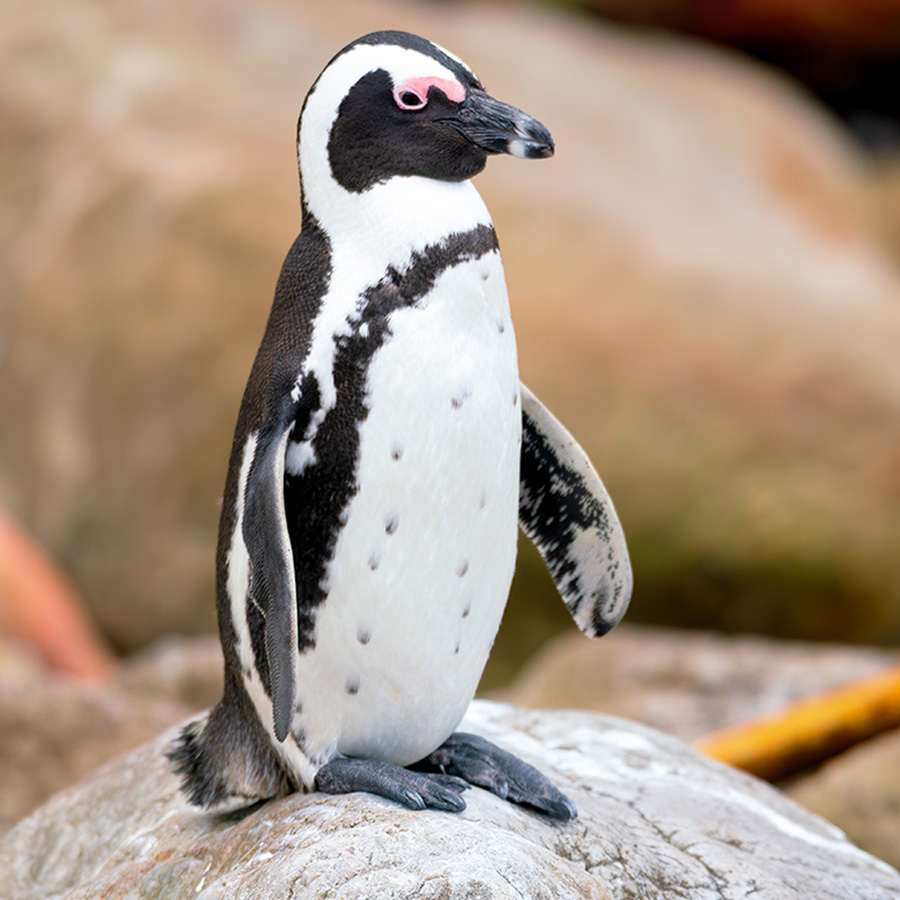
© 2017 David Cook
Africa’s only penguin species
Once numbering in the millions, African penguin populations have plummeted to less than 42,000 individuals. Overfishing, habitat degradation, and disasters (oil spills, disease outbreak, etc.) have contributed to this significant decline. Association of Zoos & Aquariums (AZA) facilities have joined forces to help the African penguin by developing various initiatives, from improving disaster response protocols for oil spills to constructing artificial nests.
BLACK-FOOTED FERRET
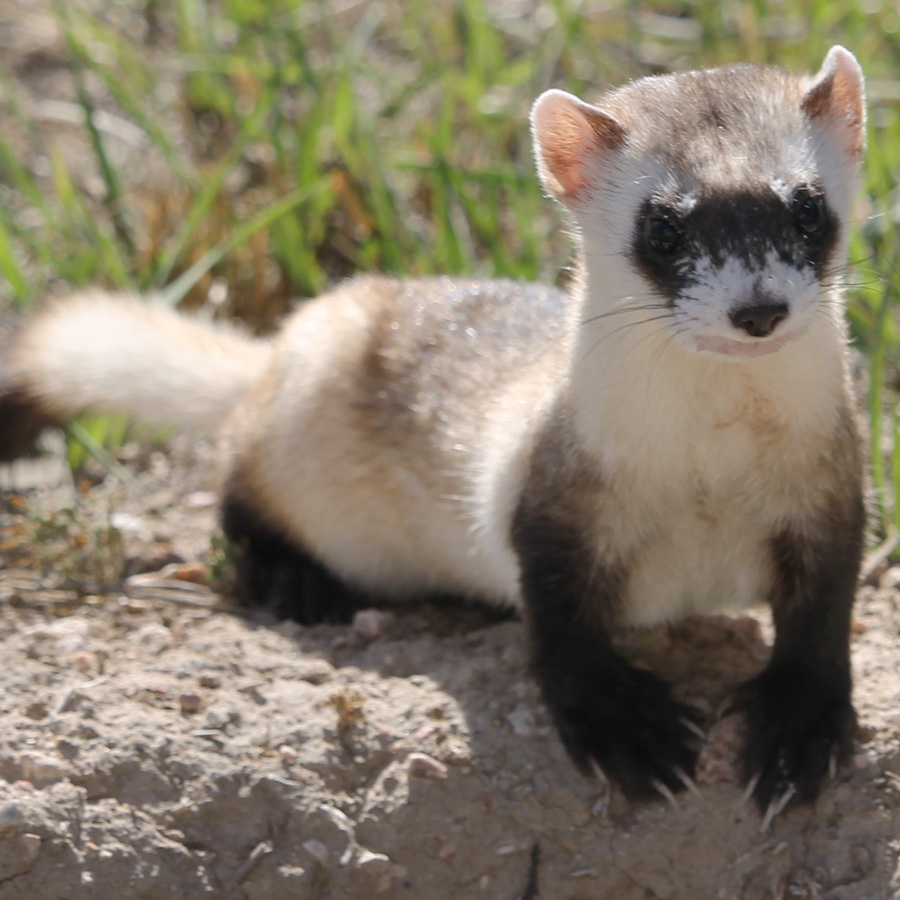
One of the most endangered mammals in North America
Through the collective resources and expertise of Association of Zoos & Aquariums (AZA) accredited institutions, the Saving Animals from Extinction (SAFE) black-footed ferret program aims to repopulate the black-footed ferret, so it is no longer an endangered species. This is being accomplished through targeted conservation projects, increasing public awareness, and raising funds in support of black-footed ferret conservation.
BLANDING’S TURTLE
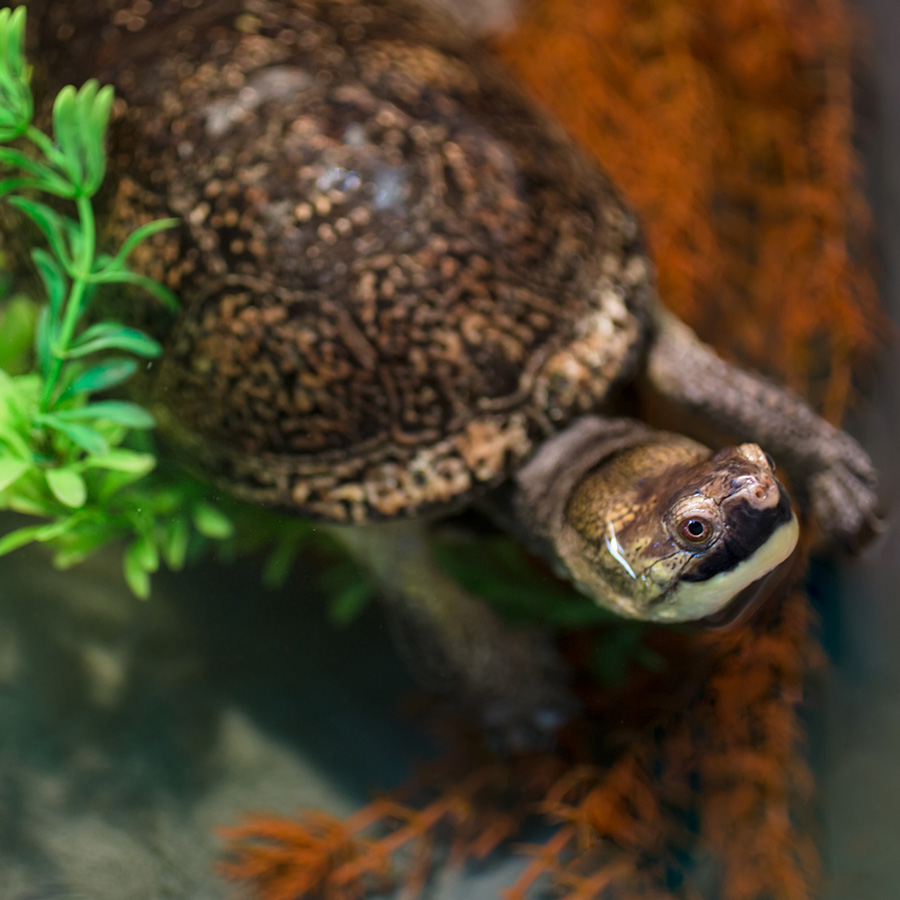
Illinois Endangered Reptile
Due to illegal capture, loss of habitat, predation, and vehicle and fishing accidents, this once-numerous local resident is now struggling to survive. Your donations will help Cosley Zoo and its local partners, like The Forest Preserve of DuPage County, in efforts to rear young turtles for release and improve the quality of their natural wetland habitat. Donations will fund continued research and purchase food and equipment vital to the long-term success of this project.
CONSERVATION TEAM
Cosley Zoo’s Conservation Team meets monthly to further conservation efforts within the zoo and the community. They are responsible for planning and implementing the zoo’s chapter of the FrogWatch USA citizen science program, organizing Adopt-a-Stream and other local clean-up events, maintaining the zoo’s rain barrel, and creating conservation awareness messaging on zoo grounds and social media, amongst other initiatves.
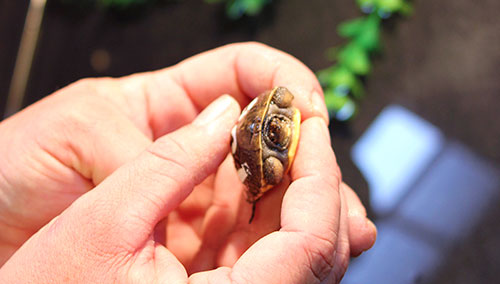
GOING GREEN IN THE GIFT SHOP
We are proud to be able to offer several eco-friendly items for purchase in the Wild Side Gift Shop! These include 4Ocean bracelets made of recovered plastic from the ocean, reusable drink cozies made from plastic water bottles, reusable metal straws, plush animals made from recycled materials, and animal figures carved from tagua nuts that look like ivory but are animal-safe.
SAFE SPECIES
In 2015, the Association of Zoos and Aquariums introduced a new initiative called AZA SAFE: Saving Animals From Extinction. The program was designed to allow the wildlife experts at AZA-accredited zoos and aquariums and their nearly 200 million yearly visitors to work together to help the world’s most vulnerable species. Since its inception, SAFE has established projects for 25 species or groups of species, and in 2019 alone contributed $230 million to conservation efforts. Cosley Zoo is proud to be a collaborator on four of the SAFE species projects.
IN THE FIELD
BLANDING’S TURTLE HEAD START PROGRAM
Cosley Zoo is proud to partner with the Forest Preserve District of DuPage County, as well as the Peggy Notebaert Nature Museum, Brookfield Zoo, and St. Charles Park District, in this program which works to help increase the wild population of Blanding’s turtles (Emydoidea blandingii) in Illinois.
Blanding’s turtles are medium-sized semi-aquatic turtles whose distribution is concentrated around the Great Lakes. Their population has been declining in recent years due to the loss of available wetland habitat. In addition, increased pressure from predators has caused a decrease in the number of turtles surviving to sexual maturity (15-20 years of age). In 2009, Blanding’s turtles were added to the endangered species list in Illinois.
The Head Start program aims to increase the number of Blanding’s turtles surviving long enough to reproduce. The Forest Preserve District of DuPage County collects gravid (pregnant) turtles from the wild and houses them until they lay their eggs. After the eggs hatch and the young turtles are off to a good start, some of them are raised by Cosley Zoo staff for about a year. The turtles are reared at an accelerated rate, so that when they are released back into a DuPage County wetland, they are larger than a wild turtle of the same age and should be less vulnerable to predators. The young Blanding’s turtles are not on display at the zoo in order to minimize their exposure to humans, but we do have an exhibit containing adult Blanding’s turtles which can be viewed by the public seasonally, as well as a live video feed of the turtle rearing area.
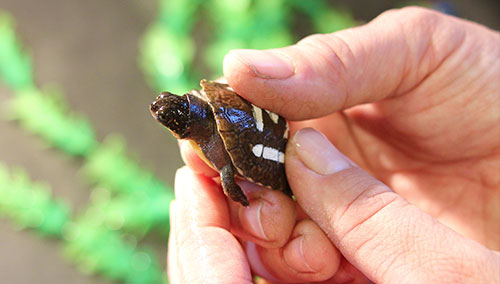
Cosley Zoo participates in several conservation initiatives on an ongoing basis, including a program to save the Blanding’s turtle.
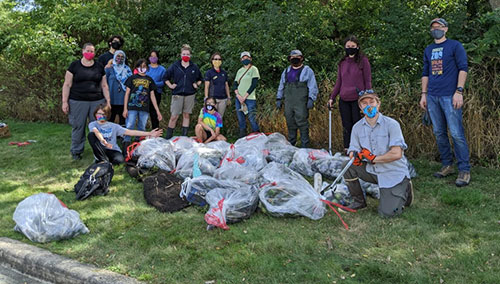
ADOPT-A-STREAM
Cosley Zoo is pleased to have joined the Conservation Foundation’s Adopt-a-Stream program. By organizing clean-ups of our adopted section of Winfield Creek twice a year, Cosley Zoo helps to keep our local waterways free of debris. Visit https://www.theconservationfoundation.org/rivers-streams/dupage-river-watershed/ to learn more, or join us on our next clean-up!
COMMUNITY CONSERVATION
Cosley Zoo staff is proud to have participated in several restoration workdays hosted by the Forest Preserve District of DuPage County, helping to restore native ecosystems through tasks such as the removal of invasive plant species. Visit https://www.dupageforest.org/ to learn how you too can get involved in helping to preserve the natural spaces in your community.
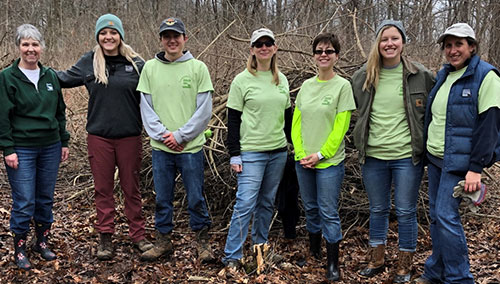
AT HOME
Citizen/Community Science
GREAT BACKYARD BIRD COUNT
Each February, zoo staff offer a training in backyard bird identification for participation in the Great Backyard Bird Count (gbbc.birdcount.org). Participation is quick and simple, requiring individuals to monitor bird populations anywhere in the world, including their own backyards, for a minimum of 15 minutes, and then submit the results online. This data provides scientists with valuable information about wild bird populations.
The 2025 Great Backyard Bird Count will take place February 14-17, 2025.
For questions about the program, please e-mail [email protected].
FrogWatch USA™
Do you have an interest in Frogs and Toads? Become a FrogWatch USA™ Volunteer!
You do not have to be a frog or toad expert to be a FrogWatch USA™ volunteer! All you need is:
- An interest in frogs and toads
- A willingness to participate in a volunteer training session at Cosley Zoo, your local FrogWatch USA™ Chapter
- A commitment to monitor a wetland site for 3 minutes multiple evenings throughout the breeding season (February-August).
Cosley Zoo’s FrogWatch USA chapter offers a public training session each spring. Join us (virtually) on February 16, from 3-5P.
Book online now! For questions about the program, please e-mail [email protected].
An in person training sessions at the zoo will be held March 7, 2025 from 5-7P. Register here for the in person training. Book online now!
FrogWatch Cosley Zoo is a local chapter of FrogWatch USA, a citizen science program, managed by Akron Zoo, that invites individuals and families to learn about the wetlands in their communities and help conserve amphibians by reporting the calls of local frogs and toads.
FrogWatch USA volunteers play an important role in amphibian conservation. Over 2,000 amphibian species are currently threatened with extinction and many more are experiencing sharp population declines. This alarming trend may be a sign of deteriorating wetland health because amphibians can serve as indicator species.
To learn more about amphibian conservation and FrogWatch USA™ click here.
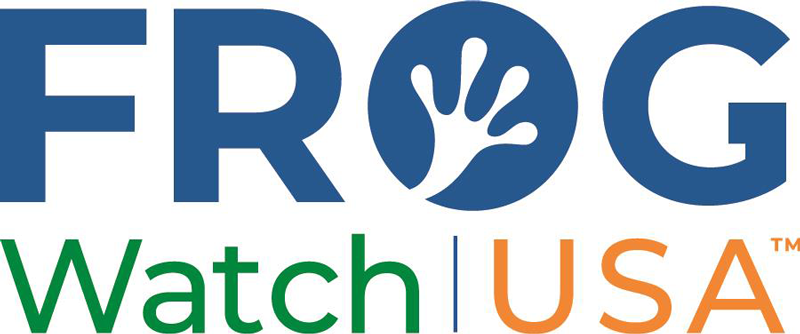
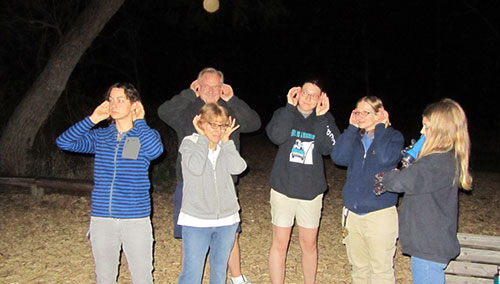
Volunteers listen for frog calls at a local wetland
Help Native Wildlife From Home
Endangered species are not just found in distant places – some live right here in Illinois! The following species are endangered in Illinois, but there are things you can do to make a difference! With a little effort at home, you can help protect locally endangered species, and all native Illinois species – even small actions can have a big impact!
- Short-eared owls are important predators of small rodents. These are the only Illinois owls to nest on the ground, and you can help protect them by walking your dog on a leash in nature preserves so their nests are not disturbed. They are also threatened by habitat loss, so supporting restoration of prairie habitat can bring more of these birds to Illinois.
- Reduced wetland habitat has negatively impacted the black-crowned and yellow-crowned night herons. Sign up for a wetland restoration workday and help improve the habitat for these birds.
- Snakes like the massasauga are important components of ecosystem health, helping to control rodent populations. Avoid using rodent bait at home to prevent contamination of the snake’s food source. In addition, rattlesnakes are often killed by humans who are afraid of being bitten. By learning to peacefully co-exist with snakes like the massasauga, you can help prevent their unnecessary elimination.
- The Hine’s emerald dragonfly depends on pristine wetland areas. Help protect your local water supply by minimizing the use of lawn chemicals, recycling used car oil, and properly disposing of paint and other toxic household products.
- The Karner blue butterfly serves an important role in the ecosystem by pollinating flowers. By planting a butterfly-friendly garden full of native plants at home, you can help all of Illinois’ endangered butterfly populations.
- Like all amphibians, the spotted dusky salamander can absorb water through its skin, so it needs to live in clean water to thrive. Participate in a stream clean-up and avoid polluting to help maintain clean water for all amphibians.
- The gray bat can eat nearly 3000 insects a night, including disease-carrying mosquitos, but overuse of pesticides can poison their food supply. You can help protect bats by reducing the amount of pesticides you use at home. Additionally, grey bats live in caves year-round, and are vulnerable to human disturbance, so it is important to follow rules put into place by the U.S. Fish and Wildlife Service when visiting or exploring caves.






